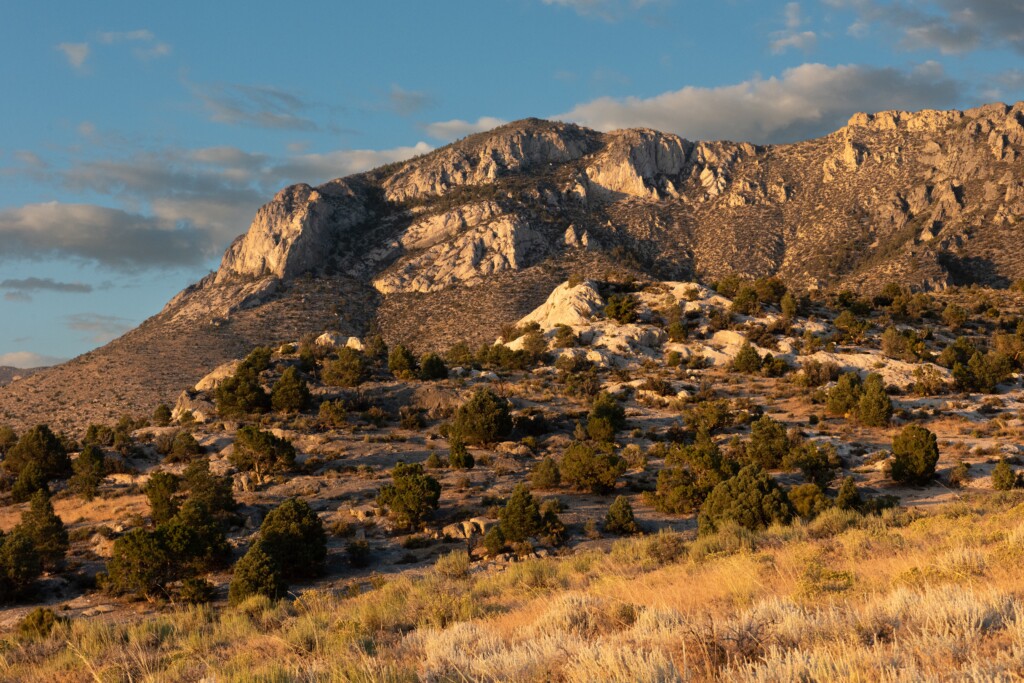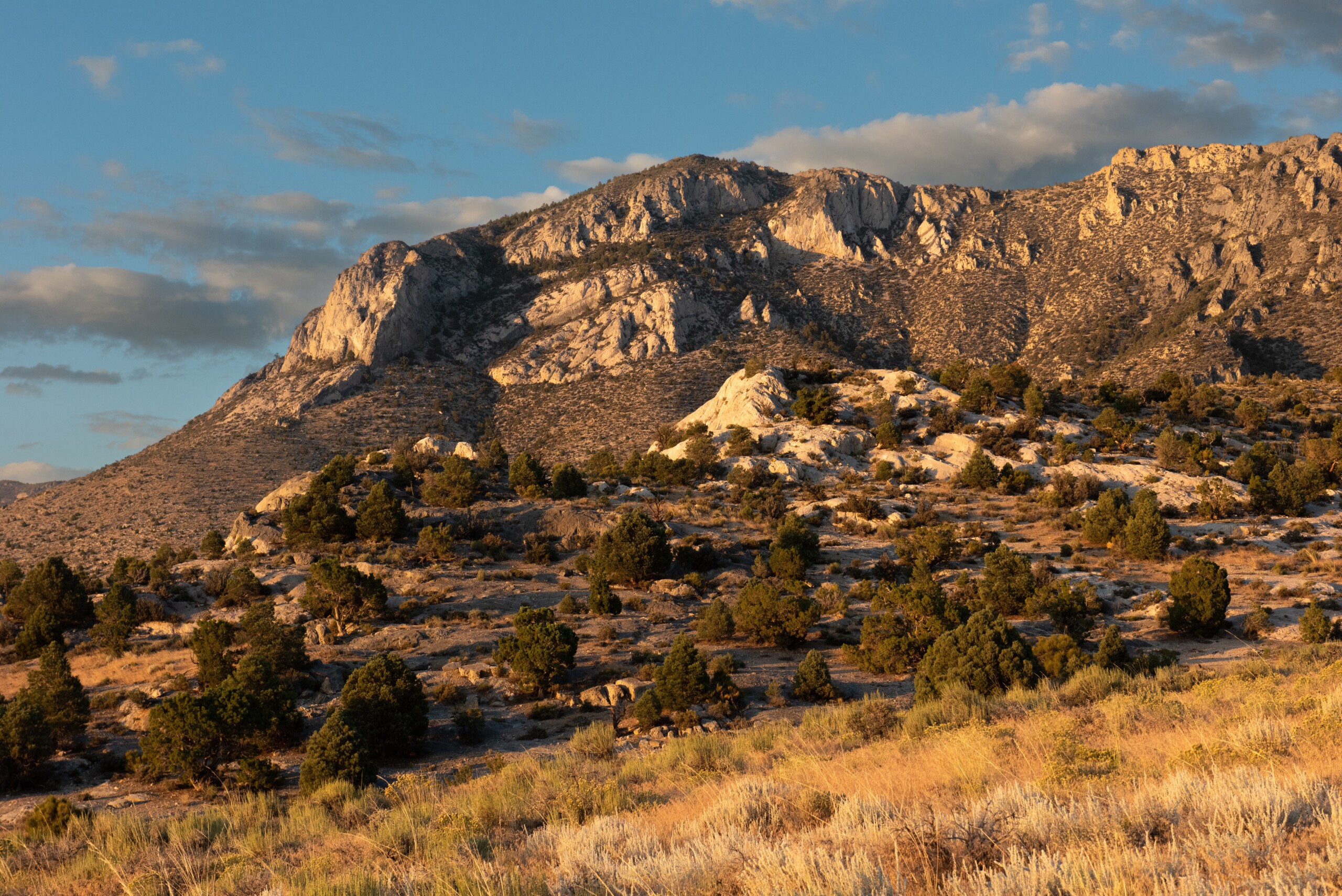When GBWN engages in a project, we don’t invest haphazardly. And our work analyzing and scrutinizing the multi-billion-dollar White Pine Waterpower proposal from rPlus Hydro is no exception.
This project would pump billions of gallons of groundwater uphill, likely with fossil fuel energy on the existing grid, in an effort to send it downhill — all in the name of green energy. Maybe that could pass the smell test in some areas. But in a declining aquifer system two valleys west of Great Basin National Park, the project proponents are fumbling and stumbling — exemplifying that they are not equipped to handle our precious groundwater, blast holes in our mountains, and jeopardize communities.
For the past year, we’ve been investigating the project, making considerable investments in scientific and legal analysis. This week we want to showcase our rigorous and exacting review that we just sent to federal regulators. Now officials from the Federal Energy Regulatory Commission will have to vet and consider our work before making any major decisions.
There are a lot of companies pitching themselves as the solution for the future. This effort exemplifies one thing we’ve learned in our 30+ years: Talk is cheap. Good science and legal work isn’t.
Last year, after an outcry from local community members in White Pine County, Great Basin Water Network began the work of reviewing and analyzing a proposal from rPlus Hydro and its subsidiary White Pine Waterpower — which would move more than 1.5 billion gallons of groundwater between two new reservoirs in the Duck Creek Range just north of Ely in Steptoe Valley.
When reading rPlus’ filings, the public is led to believe that the company has done the requisite hard work necessary to conduct an industrial operation at the expense of public resources. That’s not the case in a basin where the appropriated paper water more than doubles the available wet water.
GBWN’s analysis — recently submitted to FERC — shows that rPlus, the developer pushing the $2.3 billion project, is only doing the bare minimum. The company’s regulatory filings rely on substandard modeling, hydrologic analysis from 1967, and dubious projections in its application for a license to generate hydro power — providing regulators with diluted information about project impacts on the local aquifer and water rights holders.
The project will have large-scale impacts on the water supply, pumping groundwater out of the over-appropriated Steptoe Valley aquifer. In some areas, the water table will drop between 20 and 100 feet in a watershed that is already seeing declines in the aquifer, according to well data, the State Engineer’s Office, and analysis from GBWN model runs.
GBWN based its analysis on a USGS groundwater model that demonstrates rPlus’ proposed pumping threatens water availability, existing rights and the public interest. The impacts from rPlus will span 28,000 acres if the company starts its new project, according to the USGS model predictions.
Among the many problems for rPlus is that existing pumping is already harming aquifer levels, springs and other groundwater expressions in Steptoe Valley. Adding rPlus’ new pumping will only exacerbate the situation. And the company’s rudimentary assessments minimize what could be an expensive problem for community members and a threat to ecosystems.
In its analysis submitted to FERC, rPlus limited its evaluation of potential impacts by considering those which would occur only within an artificially chosen geographic boundary — masking the widespread drawdown that the USGS model shows. Data given to FERC by rPlus also disguise the fact that the aquifer system will take at least 100 years to recover after pumping is shut down at the end of the Project’s lifespan. rPlus also failed to inform regulators that the project will require dewatering the Duck Creek Range by blasting an 8-story hole in the mountains to build the necessary piping system to move water between the new reservoirs — a water use the company currently has no water right to support.

WHO IS OPPOSED
Great Basin Water Network joins the City of Ely, the Nevada Northern Railway and the Ruth-McGill General Improvement District in opposing the project. GBWN and others in the community began the Step Up for Steptoe campaign last fall to raise awareness, receiving overwhelming support from residents of White Pine County who are opposed to the project.
WHAT IS PUMPED STORAGE HYDROPOWER?
Pumped storage hydropower projects move water between two reservoirs at different elevations to generate electrons. When electricity on the power grid is available, it is used to pump water from the lower to the higher elevation reservoir, where it sits until it is needed by the grid in times of shortage (usually at night). At that point, the water is permitted to flow to the lower reservoir, generating electricity on the way down. While proponents pitch the technology as a type of battery storage, the cost of pumped storage comes at a high price in the arid west.
The industry is fraught with speculative efforts. FERC has received dozens of proposals in recent years, many of which are in communities with limited water supplies support. Federal regulators have only approved a handful of new projects since the 1970s. GBWN is tracking these projects across the west, and arid communities across the region are concerned about the validity of the companies and the prospects of the proposals
rPlus’ project is one of at least six proposals in Nevada that’s come to light in recent years. White Pine Waterpower is the only effort that has received significant attention from regulators.
SIGN THE PETITION AND STEP UP FOR STEPTOE
- Sign our petition demanding that regulators reject this costly, water-intensive project.
- Get engaged in FERC by telling regulators you support GBWN’s Comments in docket P-14851.
- Share our report.
WHAT’S NEXT
Federal law requires FERC to approve or deny licenses for hydro-power projects, requiring applicants to meet environmental and other pubic-interest benchmarks. The commission must now review and analyze GBWN’s comments in light of the materials already put forth by rPlus, which has spent years trying to win regulator approval for its project.
For a project of this size, there are considerable questions about who will pay the ultimate cost.
rPlus and NV Energy have been in talks about partnering on the multi-billion-dollar effort, potentially saddling ratepayers with new costs and burdens. The Public Utilities Commission of Nevada approved a measure to have NV Energy study the project in 2022, leaving questions about whether NV Energy will implement the project via the recently commenced tri-annual Integrated Resource Plan process in the PUCN.

